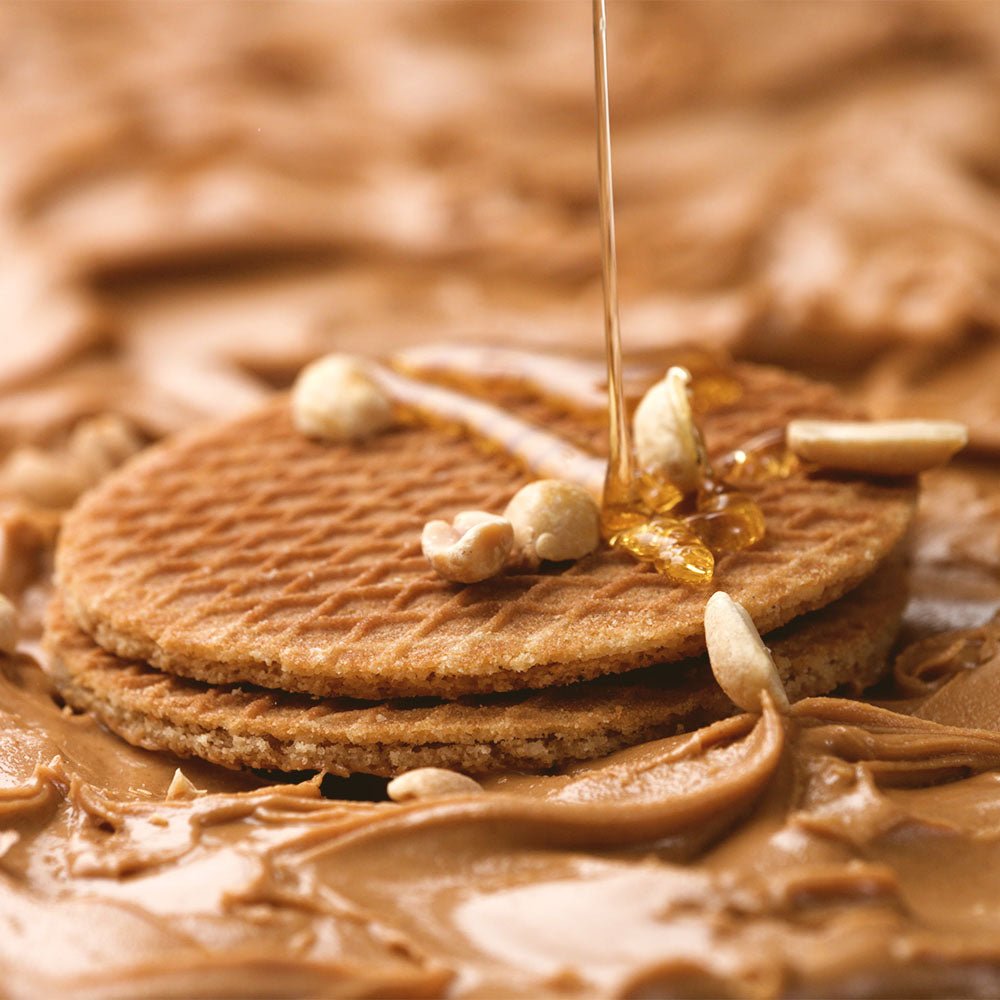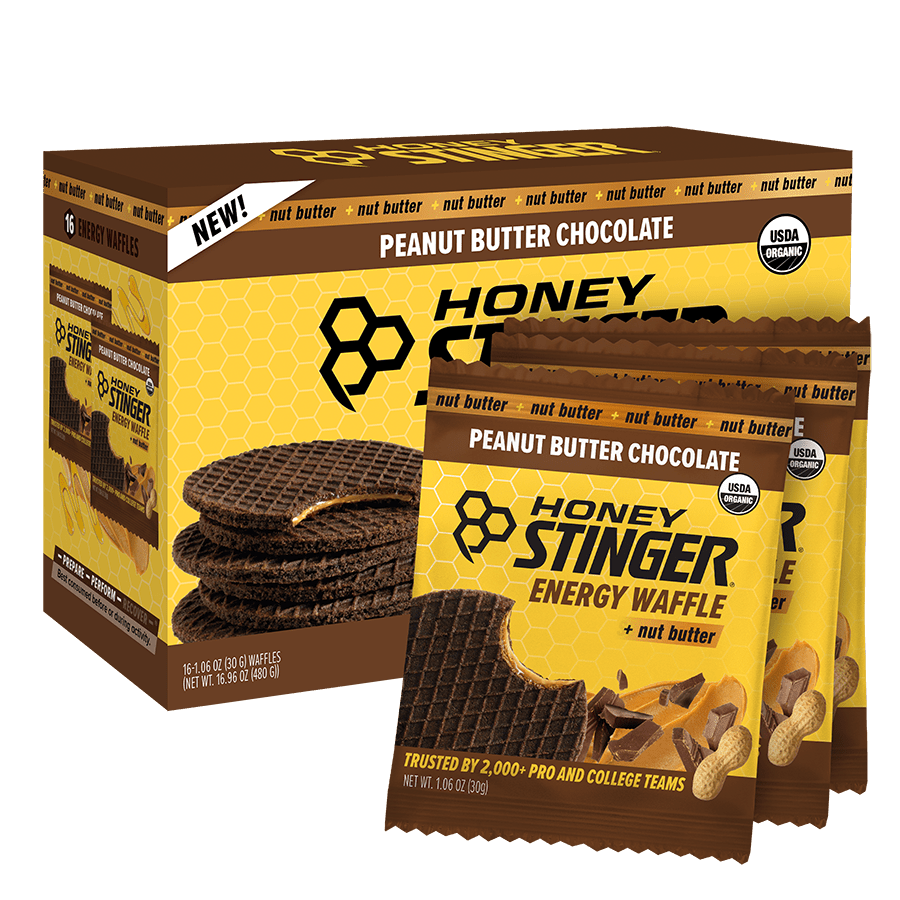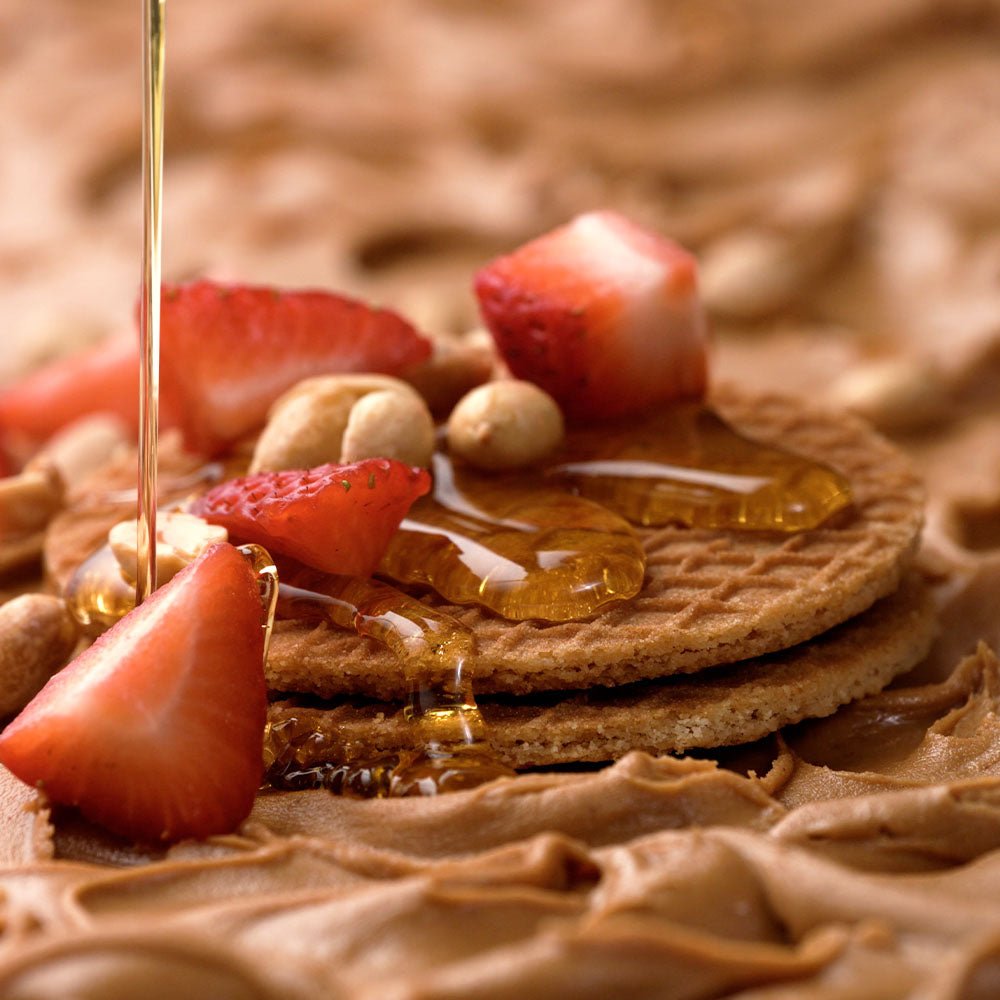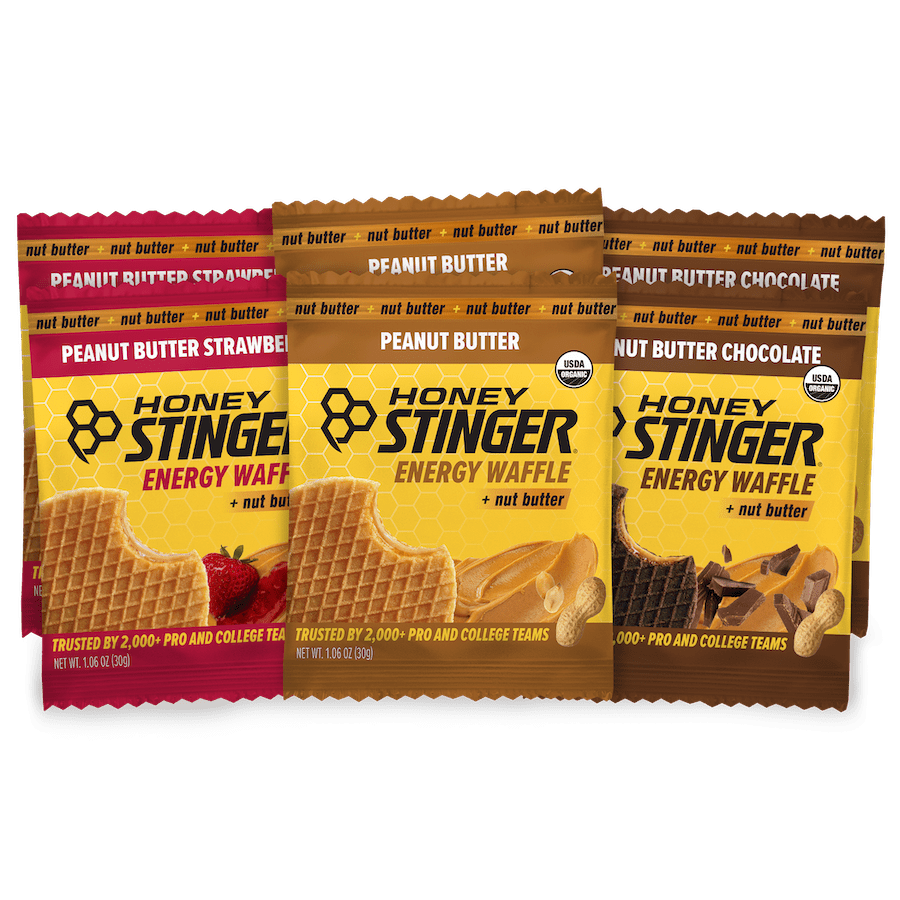Meet Double Below-the-Knee Amputee Runner Brian Reynolds
Hive Gold athlete and double amputee runner Brian Reynolds is a New Jersey-based distance runner who has broken world records for double below-the-knee amputees and competes for Team USA on the international circuit. We caught up with Brian to learn about his journey into the sport of running and how he stays motivated as a father, husband, and runner with a unique set of hurdles to overcome.
 “I was born with a compromised immune system. As a child I had just about every variety of illness that you could contract. This all culminated by contracting a form of meningitis called meningococcemia at the age of 4. It is a disease that is often fatal, and I am lucky to have survived it. The result of the illness was a double amputation of both my legs below the knees.”
“I was born with a compromised immune system. As a child I had just about every variety of illness that you could contract. This all culminated by contracting a form of meningitis called meningococcemia at the age of 4. It is a disease that is often fatal, and I am lucky to have survived it. The result of the illness was a double amputation of both my legs below the knees.”



*Photos courtesy of Brian Reynolds
 “I was born with a compromised immune system. As a child I had just about every variety of illness that you could contract. This all culminated by contracting a form of meningitis called meningococcemia at the age of 4. It is a disease that is often fatal, and I am lucky to have survived it. The result of the illness was a double amputation of both my legs below the knees.”
“I was born with a compromised immune system. As a child I had just about every variety of illness that you could contract. This all culminated by contracting a form of meningitis called meningococcemia at the age of 4. It is a disease that is often fatal, and I am lucky to have survived it. The result of the illness was a double amputation of both my legs below the knees.”
How did your running journey begin?
I found running later in life. It was not until I was in my mid 20s that I decided to try and start running. I never thought it would be something that would completely change my life or a sport that I would be good at. I spent the first 25 years of my life doing my best to avoid any sort of prolonged cardio. I was a gym rat and spent most of my time powerlifting specializing in the bench press and deadlift. In 2014 I decided to run a marathon. I had never run any mileage over 5 miles and only put in a few weeks of running training. I completed the marathon, but it was brutally painful. After the marathon I stopped thinking about cardio and returned to the gym. It would be another 3 years before I considered running seriously again.Was there a specific moment that you knew you wanted to take running to the next level?
During the summer of 2017 my friends and I were at the gym messing around on the treadmills. They were trying to see how fast they could run a mile. I decided to jump in on the action and clocked a 4:48 mile. Although it was on the treadmill I was completely untrained. That was the moment the light clicked on in my head that I might actually be fast. I decided to give running a true shot and actually train for a marathon.What is the biggest obstacle you have faced in your athletic journey and how did you overcome it/how are you working towards overcoming it?
As a double amputee distance runner there have been more obstacles than usual in my running career. There are very few amputees that manage to be successful at distance running because of the punishment that our residual limbs take. I have essentially had to pave my own way, there is very little information about how to overcome the obstacles. One of the biggest hurdles is having a running “blade.” Sports prosthetics are not covered by insurance and are one of the most costly pieces of equipment for amputees. They cost about $30k per leg. I need two of those prosthetics and have them replaced on a yearly basis. The cost alone makes it prohibitive for a lot of amputees to even try running. The other major obstacles are figuring out how to reduce the chafing and blistering on the residual limb. At times during my running career my skin has been so torn apart from friction that bone was visible. This has caused chronic infections that have required numerous surgical procedures. I now have to be on continuous prophylactic antibiotics to stop these issues from arising.
What is your most memorable athletic achievement?
Over a very short time I have been lucky to have a lot of running career highlights. However, winning the 2018 London Marathon World Para Championship as part of Team USA is one of the biggest highlights for me. I was the first in my category (lower limb amputee) and I was able to do it while representing my country.Tell us about your personal journey into running competitively.
My family is everything to me. I have two children ages 5 and 2.5 and a third arrived in May! They are the center of my life. Without the support of my wife and kids all the sporting achievements would never have happened. In sports my proudest achievement is simply the fact that I had the courage to start running. Growing up and into my 20s I was extremely self-conscious about my legs. I wore pants all the time and did not tell anyone that I was an amputee. To start running I had to leave that all behind me and not be afraid of what the world thought about my legs. For the first year of running I did not have running blades. This meant I was trying to run on legs that were not meant for that type of motion. I spent most of that year with my legs torn open. I managed to persevere through my own insecurities and the physical pain, and in the end, I was able to get running legs and have this amazing journey in life.What motivates you to compete and to keep training and pushing your limits?
On a personal level it is simply to see how far I can push myself. Running is not something I ever saw in my future. To know that I am now competing on an elite level as one of the best distance amputees in the world is still unbelievable. I have only been running seriously for three years and I do not believe that I am even close to my peak. On a greater scale it is to show the world but most importantly other adaptive amputees that no human is limited. We can achieve what we put our minds to. Our obstacles are different than most people’s but there are ways to work around and overcome them.What does an average training day look like?
I train a lot differently than most marathoners. Jonathan Cane from City Coach is a trainer I work with and together we have worked on a completely different training regime that doesn’t exist solely around running. I typically run 5-6 days per week. Which is around 40 miles in the off season and 65ish miles during marathon training. However, I also mix in heavy amounts of biking, swimming, and strength training. The variation allows my legs to recover from the pounding of running while still increasing fitness. Typically, my days start early. I am up between 4:00-4:30 each morning so I can run and bike before my kids get up. Usually those two workouts combined come out to around 90 mins. In the afternoon I usually swim or strength train and a few times a week I will hop on the bike for a longer ride.
What is your recovery routine?
Recovery is by far the most important part of being able to maintain such a high volume schedule. I will admit, I am not the best at getting enough sleep. I could do far better in this area of training. Life always seems to get in the way! However, I am very cognizant of making sure I eat the proper foods to fuel my body. I am vegetarian/vegan (I still eat honey of course!), but I am lucky that my wife is the best chef I have ever met. Besides fuel and sleep I have Normatec boots that I use to help my legs and hips recover and I proactively got to PT and Chiropractors to ensure that I am working on any functional issues so that no aches or twinges become major problems.How has running impacted your life?
Running has radically changed my life. It took an extremely shy “disabled” kid and put me on a world stage. Running transformed me from a person that made excuses walking even a quarter of a block to someone that runs double digit mileage before breakfast every morning. It is because of running that I found my wife (on top of a mountain in Zion National Park). To say that it has had a major impact on my life is an understatement. I cannot even imagine where I would be without it.What goes through your head during a moment of adversity? How do you approach this moment of adversity?
Running is something that I never thought would be a part of my life. I remember watching other kids as I was growing up wishing I could run around as easily as they could. The first time I put on running blades it was the most freeing feeling I have ever had in my life. It felt like I had wings and I could just glide along the ground. When the going gets hard in a race that is what I remember. That I am fortunate enough to be doing something that I never thought I would be able to. Remembering that feeling and the gratitude that I have to be able to run always brings a smile to my face in the toughest of times. Also, I now have my kids waiting for me at the end of a lot of races and I do not want to let them down either. So the motivation from both these areas is usually enough to help push my way from the dark and tough times that crop up in a race.
What is the biggest piece of wisdom you have learned throughout your athletic journey?
I have to learn how to be patient. So often I get over excited when training is going well and I start to over do it. Soon thereafter I cause some sort of problem with my residual limb or prosthetic and I am sidelined which leads to extreme lows (mentally). I am doing better with practicing patience in training but I am sure Coach Jonathan would say that I still have a long way to go!How do you fuel? How does your fueling different on training days versus race days?
My diet is very clean on a daily basis. I am vegetarian/vegan so the large majority of my food is homecooked. Most of my training is done using a combination of the Honey Stinger chews and waffles. For training I am bit more relaxed on fueling. I always practice race day type fueling on my long runs each week to ensure that my body is used to it but during the week I mix in random combinations just to see if there are other fueling methods that might be more effective for me. On race day I am very disciplined. Like many runners my stomach can be upset very easily. I usually start fueling 4 or 5 hours before the race (depending on how early it is). I will eat 2-3 waffles (lemon and vanilla are the favorites!) with about an hours between each. Starting 30 mins before the race I eat a full pack of chews. During the race I eat 2 chews every two miles so that I have a constant flow of energy. (this race day breakdown is for a marathon)What is your favorite Honey Stinger product and flavor?
That is so hard to narrow down! My favorite waffle is vanilla. For training days my favorite chew is fruit smoothie. Race days I always use multiple packs of cherry cola!Follow Brian's Journey
 Instagram: @brianreynoldsrunner  Facebook:   Brain Reynolds Runner *Photos courtesy of Brian Reynolds










